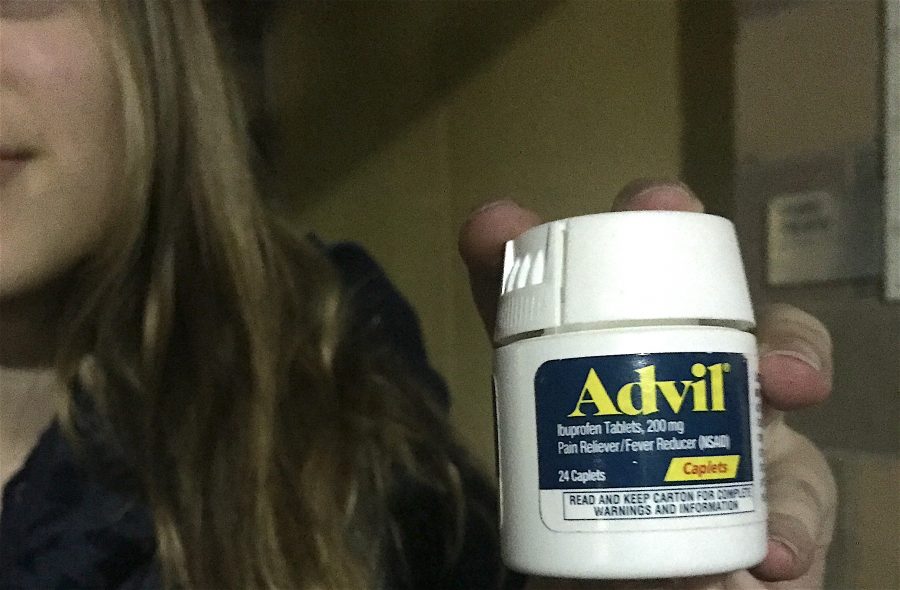Imagine waking up every morning for months or years on end with pain plaguing every move and every moment of the day.
Chronic pain is defined as any pain that lasts for more than 12 weeks, but it can often persist for much longer and even be lifelong.
As found by the American Pain Society, chronic pain rates are higher in children and adolescents than adults. Despite this, juvenile chronic pain is not widely discussed.
Juvenile chronic pain is strongly linked to increased anxiety and a greatly reduced ability to participate in normal childhood activities as basic as going to school and sleeping. These difficulties lead to a lower quality of life and constant stress on the child and their whole family.
Headaches, abdominal pain, and musculoskeletal pain, which refers to pain affecting the bones, joints, muscles, tendons, ligaments, or nerves, are the most common types of chronic pain in children. However, many conditions affecting all parts of the body can occur, and many don’t receive a diagnosis for years. Treatments for these issues range from medication to physical therapy to surgery, but these can be expensive or difficult to obtain in addition to being physically and mentally taxing.
“I started having pain second semester of eighth grade,” said Adriana Laureano, a senior, who has since been diagnosed with endometriosis and postural orthostatic tachycardia syndrome, or POTS. “My parents and I, we were in Texas at the time, and we went to as many doctors as humanly possible.”
Living with pain on a daily basis can be stressful and completely change someone’s life. Plans and choices have to be made around the possibility of a flare-up, and certain activities could stop being enjoyable when pain gets in the way.
“I have to take a lot of medicine and always be aware of how I’m feeling. Plus since my conditions cause me to have symptoms that can’t really be expected, I constantly have to be aware and make decisions that keep me as healthy as possible,” said Laureano. “I stay home a lot now and don’t go out as much. Not because I don’t want to, but my condition sometimes won’t let me.”
Anyone with chronic pain knows the major differences it can make in their social life and their relationships with those around them. Friendships could be marred because one frequently cancels plans or isn’t able to do things they used to because of chronic pain.
“My friends do worry, but honestly sometimes I really don’t think they understand to the extent that they think they do and don’t give as much as support as I sometimes need. It also comes to the point where people don’t invite me places because they think I’ll just say no or I’m sick,” said Laureano.
Living an active lifestyle can be tiring and difficult when chronic pain becomes a daily affliction.
“If I run long distances or overwork my body, ice baths and heating pads become necessary due to the excessive swelling of my nerves throughout my body, especially in my feet,” says sophomore Teresa Vollert, another student who experiences widespread chronic pain.
Most people affected by chronic pain experience good and bad days, but the quality of a good or bad day ranges drastically from person to person. Things as simple as weather or being in a bad mood can make pain drastically worse, and people with chronic pain learn to manage every factor they can to control their pain.
“I have some good days and some bad days. My good days I’m okay and have zero level pain and other days I have level ten pain and can’t even walk or get out of bed,” said Laureano.
Chronic pain conditions can require one treatment or many. Some problems can be solved with anti-inflammatory drugs or dietary changes while others require expensive prescriptions and complicated surgery.
“I take medicine when I wake up, throughout the day, and before I go to bed,” said Laureano, “I take medicines that help with my migraines and abdominal pain, and I am on birth control to help with the endometriosis.”
Laureano’s condition, endometriosis, is a disorder in which tissue that normally lines the uterus grows outside the uterus, causing menstrual irregularities and pain.
Vollert has experienced severe pain for about two years, and in 2015 she was diagnosed with fibromyalgia, a musculoskeletal condition causing widespread muscle pain and tenderness.
“When my pain is at its worst, sometimes there’s really not much I can do to help it considering there is no medication or scientific explanation for fibromyalgia,” said Vollert. “I always have to be conscious of what I’m eating, what I’m doing, what shoes I get, and keeping up with my vitamins, and trying not to let the fibromyalgia and the pain get in the way of my academics and life in general.”
Where there’s juvenile chronic pain, there’s a parent up worrying every night while their child is lying awake and hurting. It takes a toll on the whole family when a child is in pain and often major changes to the household dynamic have to be made. Laureano and her family moved from Texas to California to find better doctors and treatments for her.
“My pain has impacted my family the most. They worry and they’re scared for me and my health and frustrated because there’s nothing they can do to help,” said Laureano.
Chronic pain can become such a prevalent part in someone’s life that it can become difficult to imagine a life without it. However, modern medicine continues to advance with leaps and bounds, bringing new hope every day and always promising a better tomorrow.
For now, millions of people continue to be affected by chronic pain.
“I basically have to wake up every day and pray that I feel well,” said Laureano, “Sometimes I do, sometimes I don’t.”














W Lance Williams • Oct 4, 2017 at 10:41 pm
I’ve been in on going pain from my first hernia surgery that failed to the second one that put me in even more pain. I’m waiting to have my third surgery to hopefully fix the problem. Living with severe pain every day is not a great way to live. I’m a fighter and I fight on with Advil when It gets really bad.